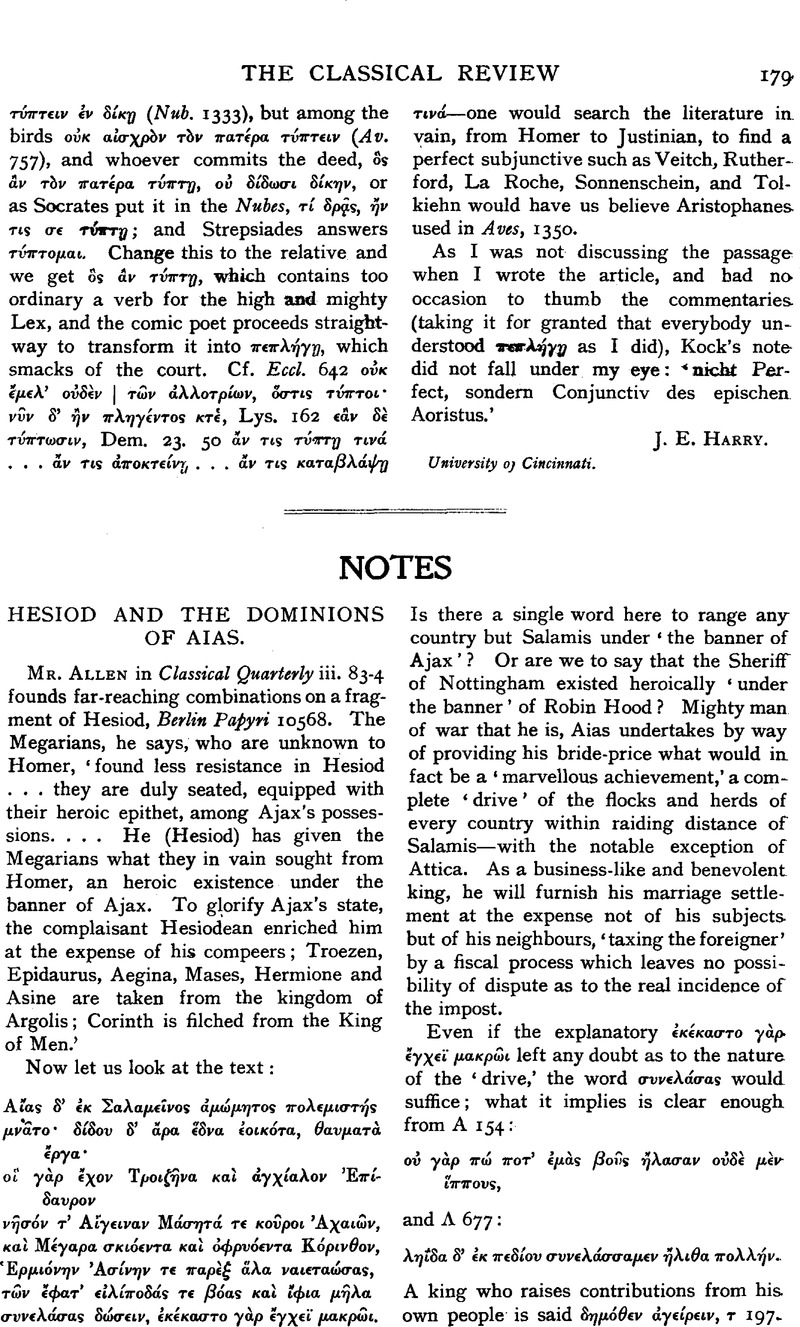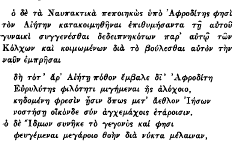No CrossRef data available.
Article contents
Notes
Published online by Cambridge University Press: 27 October 2009
Abstract

- Type
- Notes
- Information
- Copyright
- Copyright © The Classical Association 1910
References
1 Recent handbooks of mythology throw no new light on the matter (Gruppe, , Gr. Myth. u. Rel., p. 545 n. 2Google Scholar; Seeliger in Roscher's Lex. 2. 1. 64).
2 The trustworthiness of Natalis Comes is impeached by Joseph Scaliger (Epis. 309: homo futilissimus) and Huet (De Claris interpretibus 8. 5: verborum quippe et characteris securus, vix obtinet sententias). For an example of error, compare Schol. Apoll. Rh. 4. 86:  with Mythol. (1581) VI. 8: Fugit autem noctu (utidictum est) cum Argo naui Iason e regione Colchorum, illud consilium suggerente Venere, veluti testatur Idmcn in his:
with Mythol. (1581) VI. 8: Fugit autem noctu (utidictum est) cum Argo naui Iason e regione Colchorum, illud consilium suggerente Venere, veluti testatur Idmcn in his: ![]() e.q.s. ‘Idmon’ appears in the catalogue of authors cited in the Mythology.
e.q.s. ‘Idmon’ appears in the catalogue of authors cited in the Mythology.
3 Bull. d. Inst., 1838, p. 13.
4 Arch. Zeit. 12 (Denkm. u. Forsch. 6) 1854, 208.
5 Venice 1568, 1581, Frankfort 1581, Paris 1583, Frankfort 1584, [Geneva] 1596, Lyons 1602, 1605, Geneva 1605, Paris 1605, Padua 1616, Geneva 1620, Padua 1637, Geneva 1651, [Lyons] 1653. French translations: Lyons 1607, Rouen 1611, Paris 1627.


